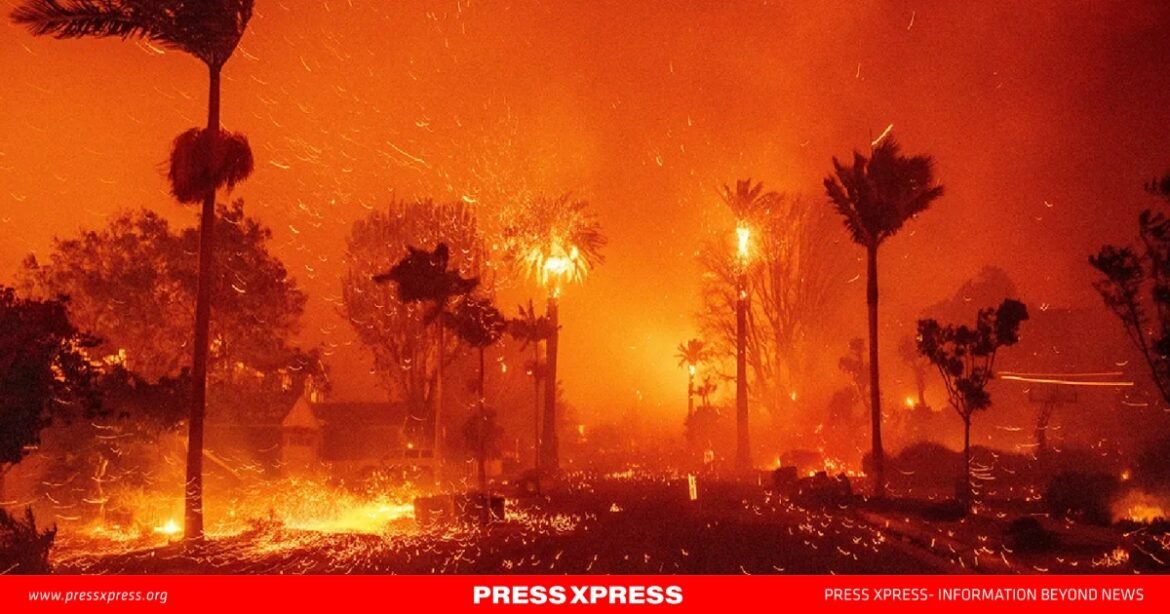The wildfires raging through Los Angeles County have become one of the most devastating events in the region’s history. More than 16,425 hectares (40,588 acres) have been scorched, leaving at least 25 dead, 12,300 structures destroyed, and over 150,000 residents displaced. These fires, fueled by environmental extremes and human vulnerability, underscore the growing challenges faced by California in an era of intensifying climate crises.
The Palisades and Eaton fires, the most destructive in Southern California’s history, have inflicted staggering economic losses estimated between $135 billion and $150 billion. While emergency crews continue to battle the flames, experts warn that this catastrophe reveals deeper systemic issues tied to urban planning and climate adaptation.
A Changing Climate Fuels the Flames
California’s wildfire seasons are no longer confined to summer months. Rising global temperatures, coupled with prolonged droughts, have transformed the state into a year-round tinderbox. Vegetation, dried by months of water scarcity, has become a perfect fuel source. The Santa Ana winds—known for their speed and intensity—have amplified the fires’ spread, creating conditions too extreme for firefighters to fully control.
The fires in Los Angeles County are a vivid illustration of these trends. Scientists argue that climate change has significantly increased the frequency and intensity of wildfires across the western United States, and California stands at the epicenter of this crisis. Without substantial action to curb emissions and adapt to these new realities, such disasters are expected to grow in scale and impact.
Urban Sprawl in High-Risk Areas
The destruction wrought by the Palisades and Eaton fires also reflects the dangers of expanding urban development into fire-prone regions. Pacific Palisades, an affluent neighborhood flanked by the Santa Monica Mountains, and Altadena, a historic community in the foothills east of Los Angeles, both exemplify the consequences of unchecked growth into natural firebreak zones.
These areas, while picturesque, are inherently vulnerable to wildfires. The destruction has also highlighted gaps in preparedness, with delayed evacuations contributing to the death toll. Many residents underestimated the speed of the flames, and stories have emerged of individuals who stayed behind to defend their homes, often with tragic consequences.
The Human and Economic Toll
The wildfires have left scars that extend far beyond the physical landscape. Families have been uprooted, entire neighborhoods erased, and communities forced to grapple with grief and uncertainty. The estimated $150 billion in economic losses includes property damage, disruptions to businesses, and the immense costs of firefighting efforts.
Victims’ stories, such as that of Anthony Mitchell and his son Justin, who died waiting for evacuation, underscore the fires’ human toll. These tragedies reveal the limitations of emergency response systems when faced with such rapid and unpredictable disasters.
A Wake-Up Call for the Future
As the fires continue to burn, they serve as a stark reminder of the urgent need for change. California must rethink its approach to urban development, ensuring that future growth does not exacerbate risks in fire-prone areas. Equally important is the necessity of robust climate action, both to mitigate the underlying causes of these disasters and to adapt to their increasing inevitability.
The Los Angeles wildfires are not just a local tragedy but a warning to the world. Without decisive action, the cycle of destruction will persist, with devastating consequences for people, economies, and the environment.


